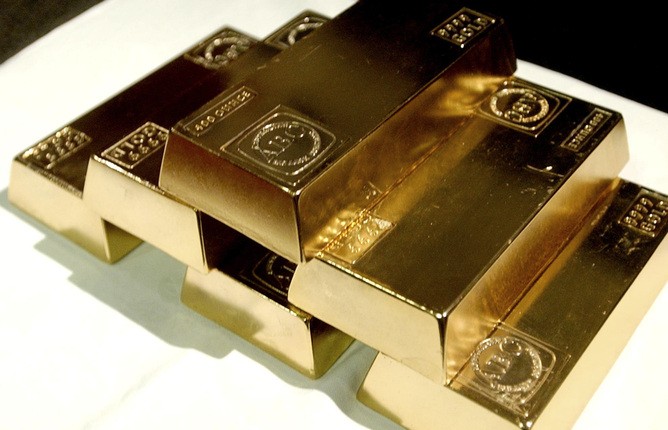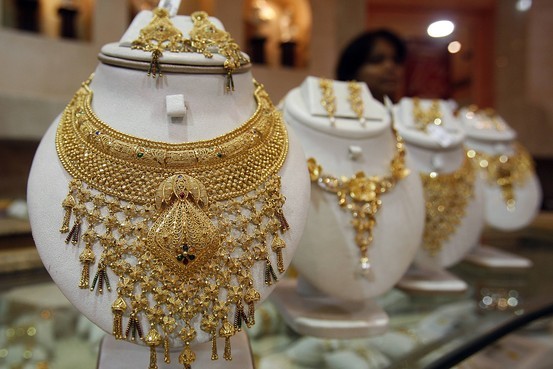Gold Prices How They Affect the Economy
Post on: 14 Май, 2015 No Comment

What Gold Prices Say About Economic Health
Did you mean ?
Sign up
You can opt-out at any time.
Please refer to our privacy policy for contact information.
Gold prices are a good indicator of how healthy the U.S. economy is. When the price of gold is high, that’s when the economy is not healthy. Why? Investors flock to gold when they are protecting their investments from either a crisis or inflation. When gold prices drop, that usually means the economy is healthy. That’s because investors have left gold for other, more lucrative, investments like stocks. bonds or real estate .
Gold, The Ultimate Bubble, Has Burst
Commodities trader George Soros said that Gold is the ultimate bubble. Were high prices in 2011 just a sign of an asset bubble. Why is gold so susceptible to speculation? And can prices really go below $1,000 an ounce? You bet they can! More
When gold hit $1,895, people said it would reach $2,000. They were wrong.
September 2011 — Gold Hits All-Time High of $1,895 an Ounce
On September 5, 2011 gold reached its all-time record of $1,895 an ounce. This was caused by a poor jobs report. the ongoing eurozone debt crisis. and lingering uncertainty around the U.S. debt ceiling crisis.
Here’s a brief chronology, showing why gold rose from $1,000 an ounce in 2009 to nearly double that amount 2 1/2 years later.
July 2011 — Gold Hits New Record Thanks to Debt Crisis
Gold prices soared to a new high of $1,620 an ounce thanks to the U.S. debt ceiling crisis. Investors were worried that Congress wouldn’t raise the debt ceiling in time. Without the ability to issue new debt, the Federal government might have been forced to default on its debt. The high price of gold meant the economy wasn’t fully recovered, as investors sought a safe haven thanks to this threat to U.S. Treasuries.
May 2011 — Gold Prices Plummet
Gold, silver, copper and oil prices plummeted, thanks to reports that successful commodities traders like George Soros reduced their holdings. Silver was the first to go, falling 7.9%, its largest one-day drop in 30 years, to $39.38 an ounce. It had hit a 31-year high of $48.58 an ounce just one week earlier. Gold plummeted to $1,514.90 an ounce. after reaching an all-time high of $1,556.70 only two days earlier. Oil fell $1.81, to $109.24 a barrel, a two-week low. Copper fell to $4.12 a pound, a seven-week low.
April 2011 — Gold Sets Record as Fed Ends QE2
Federal Reserve Chairman Ben Bernanke ‘s first press conference ever had quite an impact on gold prices. The Fed announced it would end its two-year program of quantitative easing. known as QE2. in June. The Fed had bought $600 billion in U.S. Treasuries to keep long-term interest rates low. However, this announcement sent gold prices soaring to a new record of $1,520.29 an ounce on April 4, 2011. Why? Gold investors were worried that ending QE2 wasn’t enough to ward off inflation. Bernanke said the high oil prices that pushing up prices were temporary. Investors also thought the Fed should have announced it would raise the Fed funds rate in 2011. The result? They bought the safe haven — gold.
September 2010 — Gold Hit $1,274 an Ounce
Gold spot bullion prices surged to a new record, at $1,274.75 an ounce. Esteemed commodities guru George Soros announced that gold was the ultimate bubble. and was no longer a safe investment. Research by metals consultant GFMS predicted that gold would skyrocket to $1,300 an ounce. Who was right? Both of them.

June 2010 — Gold Soared to $1,238 an Ounce
In June 2010, investors and central banks diversified out of euros. dollars and other investments and into gold. Uncertainty about the eurozone debt crisis and the growing debt in the U.S. created volatility in the currency markets. Gold is always seen as a safe haven during times of uncertainty. Many people wondered if that was a good time to buy gold. In retrospect, it seems like it. Buying gold at that time would have resulted in a 53% return on your investment 15 months later. That’s why timing the market always seems like a good idea — in retrospect.
November 2009 — How High Will Gold Climb?
Gold continued its historic rise, hitting another record of $1,081 an ounce in November 2009. This time, investors were buoyed by India’s purchase of 200 metric tons of the precious metal from the International Monetary Fund. Gold bugs thought that this would be the beginning of central banks around the world adding to their gold reserves. At the time, there were concerns about the value of the U.S. dollar, and many thought the banks would sell their dollars and buy gold.
September 2009 — Gold Prices Near All-Time High of $1,032
In September 2009, gold was trading near its all-time high of $1,032. As the dollar declined. many readers wondered whether it was a good time to buy gold. It sure was — if you had a crystal ball and could see into the future. At the time, the world was just coming out of the 2008 financial crisis. Many thought economic growth would bounce back, like it did following any other recession. Instead, a high foreclosure rate in the U.S. and growing sovereign debt concerns in Europe kept investors on edge.
February 2009 — Gold Prices Reach $1,000 an Ounce
In February 2009, gold reached $1,000 an ounce. Many investors thought this meant gold was a good investment. However, most financial planners will tell you that you should have no more than 10% of your assets in gold. We now know that anyone who bought at that time would have seen their investments rise 80% over the next 2 1/2 years. That’s because there was still so much uncertainty — in fact, the recession wouldn’t end until later that year.
Gold is bought as a hedge against inflation. Photo: George Peters/Getty Images














